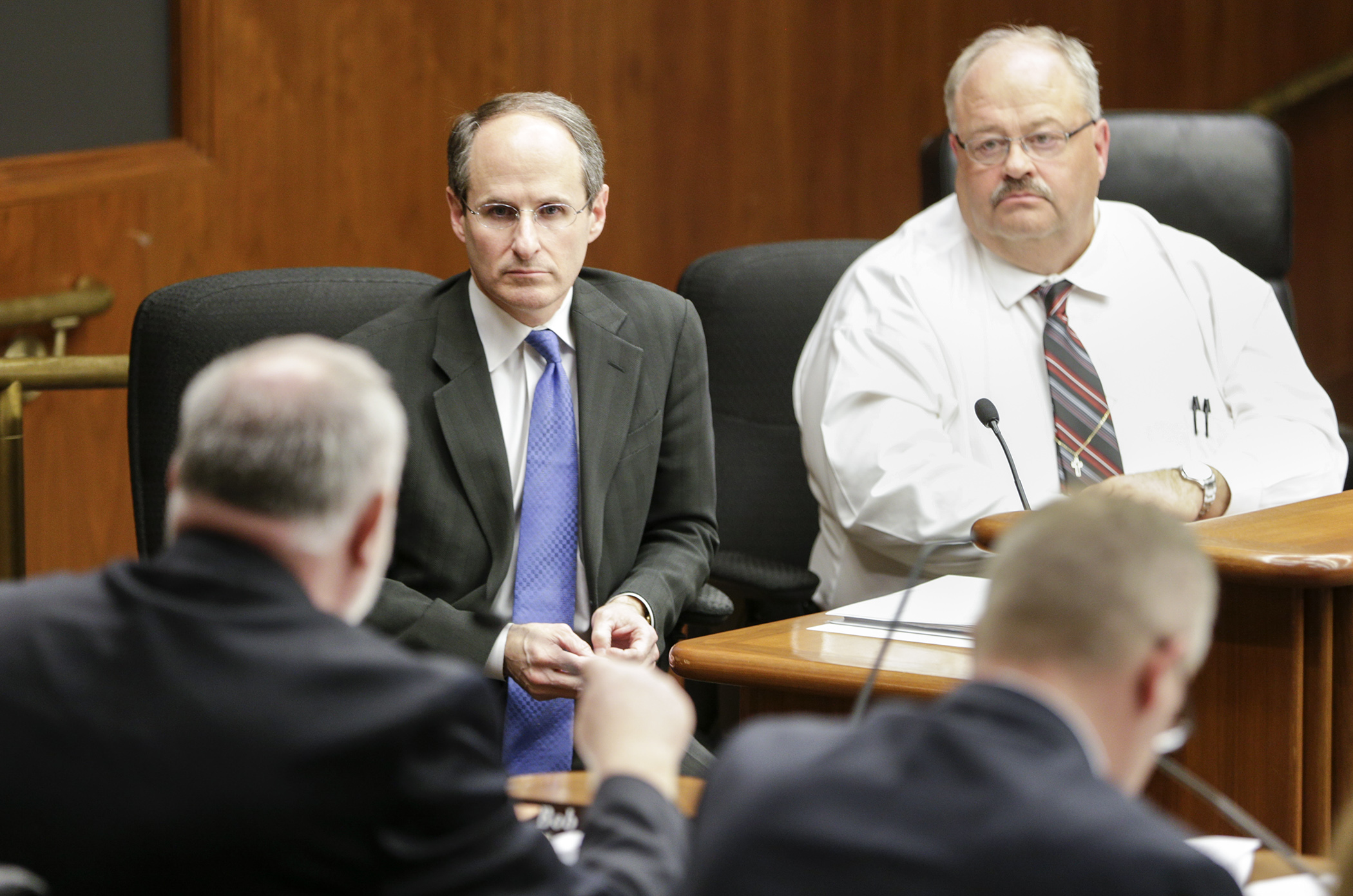Hoping to stabilize insurance market, plan would create a cushion for carriers

Hoping to stabilize an insurance market with increasing individual premiums and a declining number of providers, some lawmakers believe establishing a state-regulated reinsurance program would help heal Minnesotans’ insurance headaches. Labor and advocacy groups disagree.
Sponsored by Rep. Greg Davids (R-Preston), HF5, as amended, would create the Minnesota Premium Security Plan, a program that would be governed by the Minnesota Comprehensive Health Association. It is intended to insure health carriers operating in the state’s individual insurance market. The hope, according to proponents, is to create a cushion for carriers so they don’t have to increase individual premiums elsewhere.
Under the bill, insurance carriers in the plan would be eligible after hitting $50,000 in claims – and up to $250,000. In between those limits, the reinsurance plan would reimburse health carriers between a 50 and 70 percent rate. Although there isn’t a current appropriation attached to the bill, a similar proposal abandoned in the Senate, SF1, would cost taxpayers $15 million.
The House Commerce and Regulatory Reform Committee approved the bill on Wednesday, sending it to the House Health and Human Services Finance Committee. There is no direct Senate companion.
“This is a bill about ideas on how we set a reinsurance program that works – that will save the market for 2018,” Davids said, adding later, “If we don’t continue to work on some of the reforms, we won’t continue to have carriers in the market in 2018.”
The need for reinsurance arises, Davids and advocates said, when a small minority of individual health insurance purchasers constitute a majority of health care costs in a given year. An estimated 2.2 percent of Minnesotans are the cause of about 40 percent of the state’s medical bills, according to Commerce Commissioner Mike Rothman.
Calling a $326 million insurance bailout signed into law in January as an “emergency fix,” Rothman added that “time is of the essence” for more reforms.
While Davids called the bill “a work in progress,” the reinsurance program raises concerns from activists and labor groups.
“Ultimately, we believe the problem of increasing health care costs won’t be solved until the profit motive is removed from the system,” said Jon Tollefson, governmental affairs specialist for the Minnesota Nurses Association. “The individual market shows the private insurance system is not working. We believe that sending taxpayer money into the black box of the corporate insurance industry, with no plan to ensure that Minnesotans get quality health care for this money, is not the solution.”
Dan Quillin, a member of Mayflower United Church of Christ in Minneapolis and board member of ISAIAH, echoed the nurses union’s concerns, saying, “We believe that sending hundreds of millions of taxpayer dollars into the black box of the insurance industry, without strict accountability and greater transparency, is not a solution.”
Reinsurance was previously part of the Senate’s key individual health insurance premium fix proposal, but the House didn’t include that provision in its version. The two chambers agreed to keep it out of the bill signed in January, that instead gave certain Minnesotans financial relief from rising premiums and, among other reforms, allowed for-profit HMOs to enter the state’s individual insurance marketplace.
Related Articles
Search Session Daily
Advanced Search OptionsPriority Dailies
Ways and Means Committee OKs proposed $512 million supplemental budget on party-line vote
By Mike Cook Meeting more needs or fiscal irresponsibility is one way to sum up the differences among the two parties on a supplemental spending package a year after a $72 billion state budg...
Meeting more needs or fiscal irresponsibility is one way to sum up the differences among the two parties on a supplemental spending package a year after a $72 billion state budg...
Minnesota’s projected budget surplus balloons to $3.7 billion, but fiscal pressure still looms
By Rob Hubbard Just as Minnesota has experienced a warmer winter than usual, so has the state’s budget outlook warmed over the past few months.
On Thursday, Minnesota Management and Budget...
Just as Minnesota has experienced a warmer winter than usual, so has the state’s budget outlook warmed over the past few months.
On Thursday, Minnesota Management and Budget...